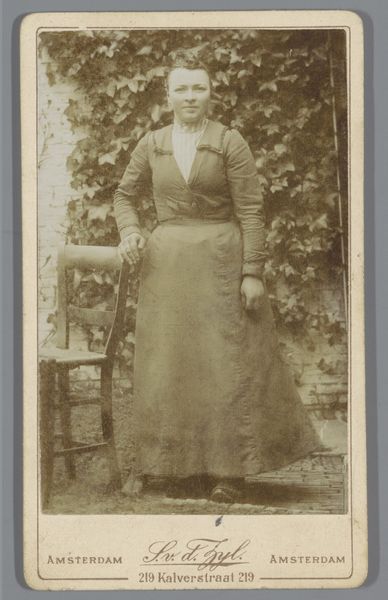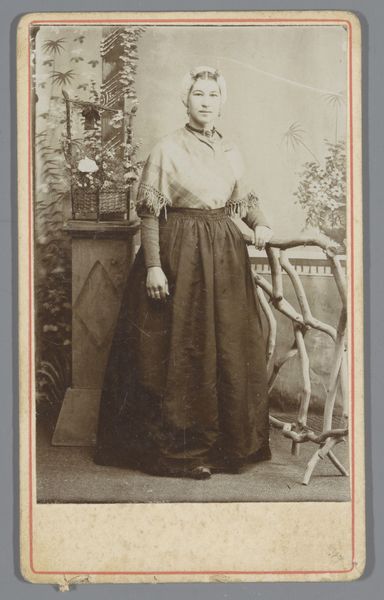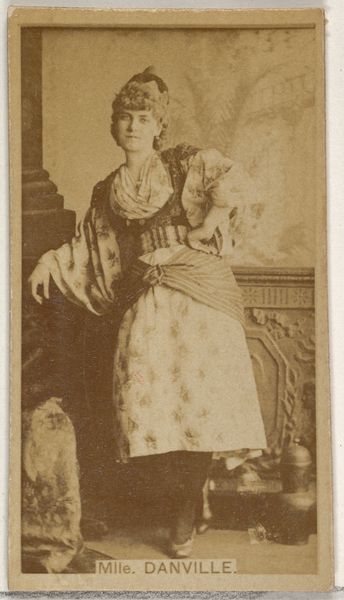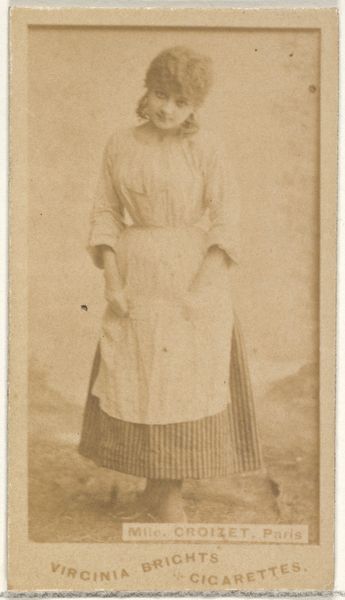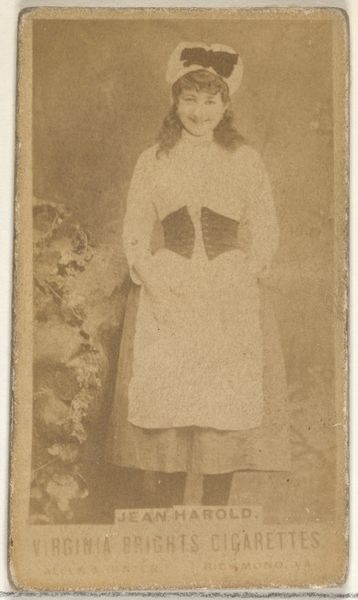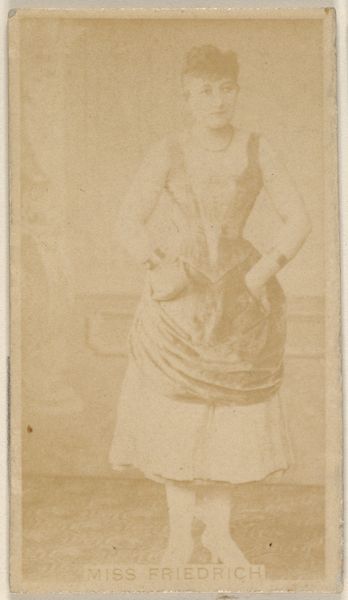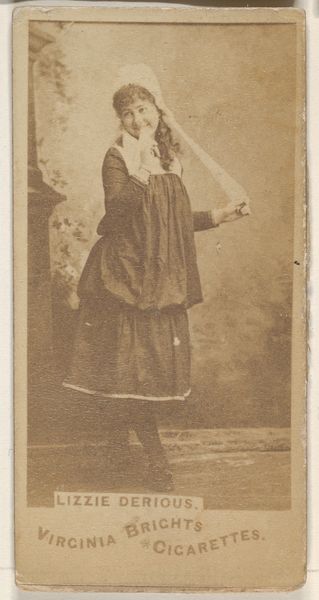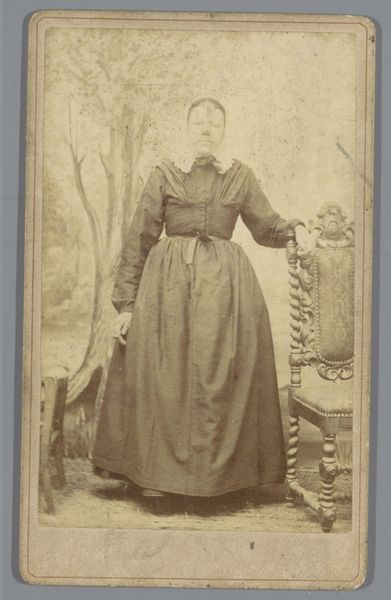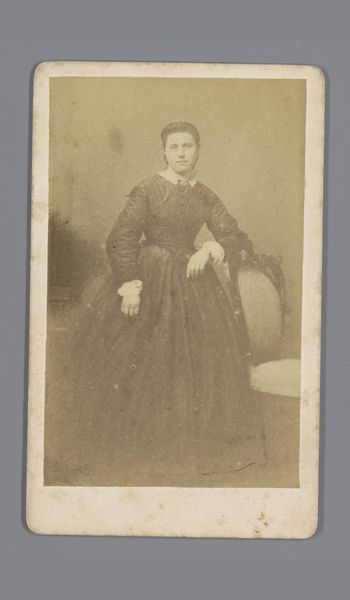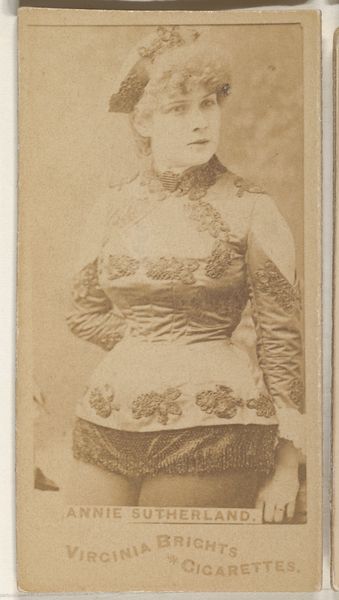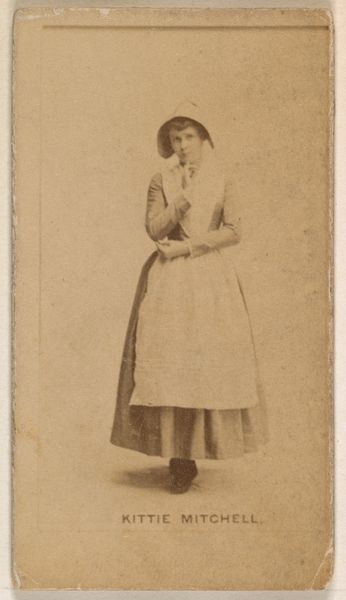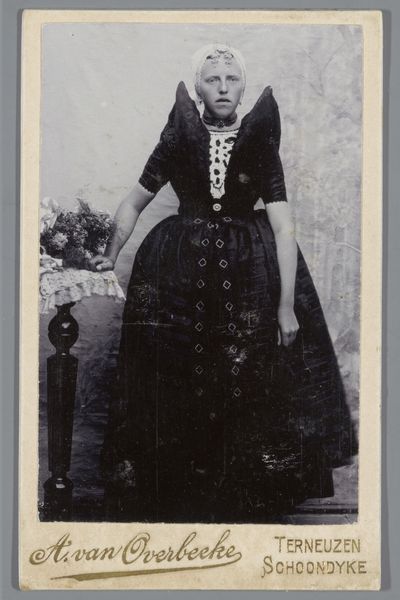
photography
#
historical design
#
photography
#
historical fashion
#
genre-painting
Dimensions: height 104 mm, width 64 mm
Copyright: Rijks Museum: Open Domain
Editor: Here we have a photograph titled "Portret van een onbekende vrouw in Urker dracht," created sometime between 1885 and 1910 by J. Meyer. It’s struck me how it seems to capture a very specific time and place in history through this woman’s traditional clothing. How do you interpret this work, especially considering its historical context? Curator: The photograph indeed speaks volumes about its time. The “Urker dracht,” or Urk costume, places the woman within a very specific community, the village of Urk, which was quite isolated until relatively recently. Photography at this time became a tool to document these communities. This raises the question of agency. Do you think she chose to be photographed, presenting herself, or was she part of a larger project documenting regional types? Editor: That’s a really interesting question I hadn't considered. The woman’s posture seems quite formal, almost staged. It does make me wonder who controlled the image here and why. Curator: Precisely! Early photography had strong ties to scientific and ethnographic documentation. Photographs like this were circulated as postcards or collected in albums, often reinforcing certain stereotypes or exoticizing rural communities for urban audiences. Notice how her clothing, especially the elaborate head covering and embroidered details, becomes the central focus. What impact do you think such objectification had on the subject? Editor: It probably further marginalized them. Rather than seeing her as an individual, viewers were seeing a representation of an "other," potentially solidifying social distances. The backdrop looks almost artificial as well. Curator: Exactly. These elements remind us to be critical viewers. What seems like a straightforward portrait is actually deeply embedded within social and cultural power dynamics. Thinking about it, how does the museum affect our own contemporary relationship with photographs like these? Editor: It definitely adds another layer of interpretation, assigning an artistic and historical value that maybe wasn't initially intended. I now view it with much more critical awareness. Curator: Indeed. Looking closer always reveals the hidden layers beneath the surface.
Comments
No comments
Be the first to comment and join the conversation on the ultimate creative platform.
